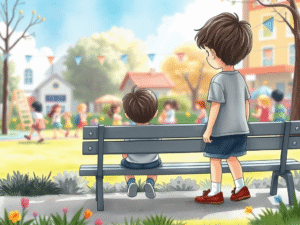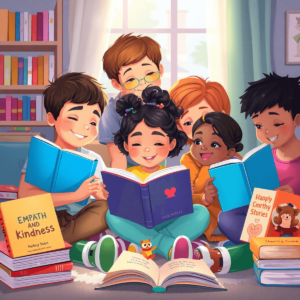
In a world filled with constant distractions and fast-paced living, finding the right tools to nurture emotional intelligence in children can seem like a daunting task. Enter “The Rabbit Listened“ by Cori Doerrfeld—a beautifully illustrated, tender-hearted story that speaks volumes about empathy, emotional connection, and the power of simply being present.
Table of Contents
If you’re a parent, caregiver, or educator searching for the perfect children’s book that resonates with both young hearts and adults alike, look no further. Not only does The Rabbit Listened captivate children’s imaginations with its heartwarming story, but its lessons also create lasting bonds within families. Here’s why this book deserves a special place on your child’s bookshelf—and how you can use it to deepen connections in your home.
What Makes “The Rabbit Listened” So Special?
This isn’t your typical children’s book. The Rabbit Listened tells the story of Taylor, a young child who experiences the frustration and sadness of seeing something they’ve worked hard to build completely fall apart. As Taylor sits in sadness, various animals come to offer advice—some suggest fixing the problem, others encourage yelling, and some even suggest forgetting. But none of these approaches feel right.
Then comes the rabbit. Quiet, calm, and without saying a word, the rabbit simply sits and listens. And that’s when the magic happens.
The story’s simplicity is its strength. It teaches children (and reminds adults!) that sometimes the best way to support someone is not by fixing, solving, or distracting, but by offering a quiet, understanding presence.
The Emotional Benefits for Children
- Nurtures Empathy
Through the characters, children learn to recognize that everyone processes emotions differently. As they follow Taylor’s journey, kids begin to understand that listening is one of the most powerful ways to show love and support. - Validates Emotions
Often, children feel pressure to move past negative emotions quickly. This book creates a safe space to acknowledge feelings like sadness, frustration, or anger, showing kids that it’s okay to sit with those emotions for a while. - Encourages Emotional Resilience
By witnessing Taylor’s process of rebuilding after a setback, kids learn that it’s possible to move forward at their own pace. They see that patience and understanding pave the way for healing. - Builds Communication Skills
The story opens the door for meaningful conversations about emotions. Kids learn that it’s okay to ask for what they need—whether it’s advice, a hug, or just someone to sit quietly with them.
How “The Rabbit Listened” Strengthens Family Bonds
The beauty of The Rabbit Listened is that it’s not just a book for children—it’s a guide for families. In our busy lives, it’s easy to default to “fix-it mode” when our kids are upset. But this book gently reminds us to pause, listen, and let our children feel heard.
When you read this book together, you’re teaching your child that your home is a safe space for emotions. You’re showing them that their feelings matter—and that you’re there for them, no matter what.
Simple Activities to Reinforce the Book’s Message
Want to take the lessons of The Rabbit Listened off the page and into your daily life? Here are a few activities to try with your kids:
- The Listening Game
Sit in a circle as a family. Take turns sharing something about your day—good or bad—while everyone else listens quietly. No interruptions, no advice, just listening. Afterward, reflect on how it felt to be truly heard. - Create a “Quiet Friend” Craft
Make your own version of the rabbit from the story! Grab some paper, markers, or craft supplies, and create a rabbit together as a family. Let the rabbit become a symbol of calm listening in your home. - Role-Playing Emotions
Act out different scenarios where someone might feel upset, and practice how the rabbit would respond. Take turns being Taylor and the rabbit to reinforce the idea of empathetic listening. - Feelings Journal
Encourage your child to keep a small journal where they can draw or write about their emotions. At the end of the day, ask if they’d like to share their journal with you—and just listen as they talk about what they’ve written.
Why This Book Is a Gift for Every Parent
“The Rabbit Listened” is more than a story—it’s a tool for connection. It subtly teaches both parents and children how to navigate the ups and downs of life with grace, patience, and understanding.
Incorporating this book into your routine can help create a culture of empathy and active listening in your home—one that strengthens your bond with your child and shows them that they are never alone in their experiences.
So, the next time your little one faces a big feeling, remember the quiet wisdom of the rabbit. Sit, listen, and let the story of The Rabbit Listened inspire a moment of connection that will last a lifetime.
Ready to bring this transformative book into your home? Whether as a bedtime story or a conversation starter, The Rabbit Listened is a gentle reminder that sometimes, the best thing we can do is simply be there.

